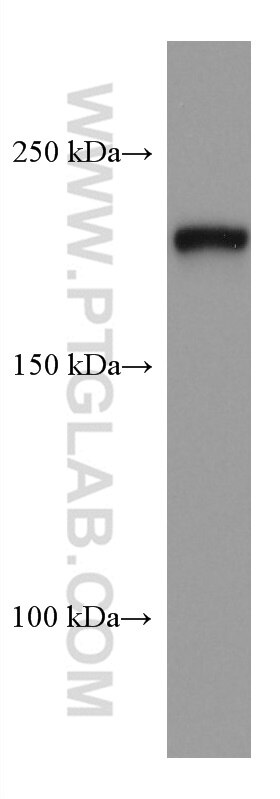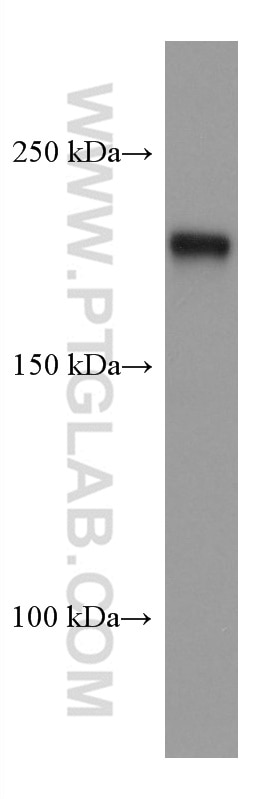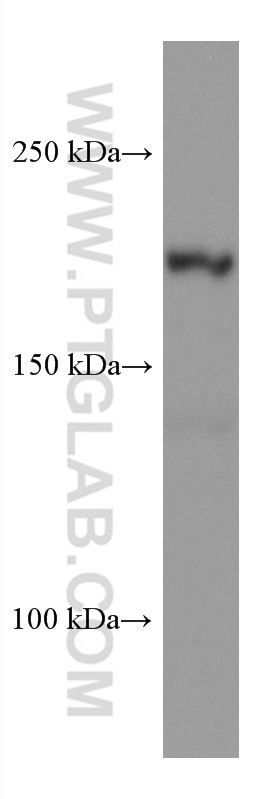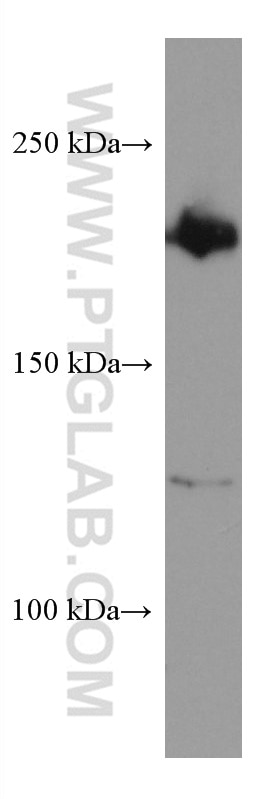PHLPP Monoclonal antibody
PHLPP Monoclonal Antibody for WB, ELISA
Host / Isotype
Mouse / IgG2b
Reactivity
Human, mouse , rat, pig and More (1)
Applications
WB, ELISA
Conjugate
Unconjugated
CloneNo.
2E8E6
Cat no : 67640-1-Ig
Synonyms
Validation Data Gallery
Tested Applications
| Positive WB detected in | mouse brain tissue, rat brain tissue, pig brain tissue, HEK-293 cells |
Recommended dilution
| Application | Dilution |
|---|---|
| Western Blot (WB) | WB : 1:1000-1:6000 |
| Sample-dependent, check data in validation data gallery | |
Published Applications
| WB | See 3 publications below |
Product Information
67640-1-Ig targets PHLPP in WB, ELISA applications and shows reactivity with Human, mouse , rat, pig samples.
| Tested Reactivity | Human, mouse , rat, pig |
| Cited Reactivity | human, mouse, pig |
| Host / Isotype | Mouse / IgG2b |
| Class | Monoclonal |
| Type | Antibody |
| Immunogen | PHLPP fusion protein Ag18982 相同性解析による交差性が予測される生物種 |
| Full Name | PH domain and leucine rich repeat protein phosphatase |
| Calculated molecular weight | 1717 aa, 184 kDa |
| Observed molecular weight | 185 kDa |
| GenBank accession number | BC126277 |
| Gene symbol | PHLPP |
| Gene ID (NCBI) | 23239 |
| RRID | AB_2882840 |
| Conjugate | Unconjugated |
| Form | Liquid |
| Purification Method | Protein A purification |
| Storage Buffer | PBS with 0.02% sodium azide and 50% glycerol pH 7.3. |
| Storage Conditions | Store at -20°C. Aliquoting is unnecessary for -20oC storage. |
Background Information
PHLPP (PH domain leucine-rich-repeats protein phosphatase) belongs to a novel family of Ser/Thr protein phosphatases that consists of PHLPP1 and PHLPP2 isoforms. It has been shown that PHLPP negatively regulates multiple oncogenic pathways by directly dephosphorylating and inactivating key signaling molecules, including Akt, S6K, and RAF1. Observed MW of PHLPP is 185 kDa.
Protocols
| Product Specific Protocols | |
|---|---|
| WB protocol for PHLPP antibody 67640-1-Ig | Download protocol |
| Standard Protocols | |
|---|---|
| Click here to view our Standard Protocols |
Publications
| Species | Application | Title |
|---|---|---|
Oxid Med Cell Longev MicroRNA-299a-5p Protects against Spinal Cord Injury through Activating AMPK Pathway. | ||
Pediatr Res Preterm birth alters the feeding-induced activation of Akt signaling in the muscle of neonatal piglets | ||
Cell Death Dis Direct conversion of human umbilical cord mesenchymal stem cells into retinal pigment epithelial cells for treatment of retinal degeneration |





